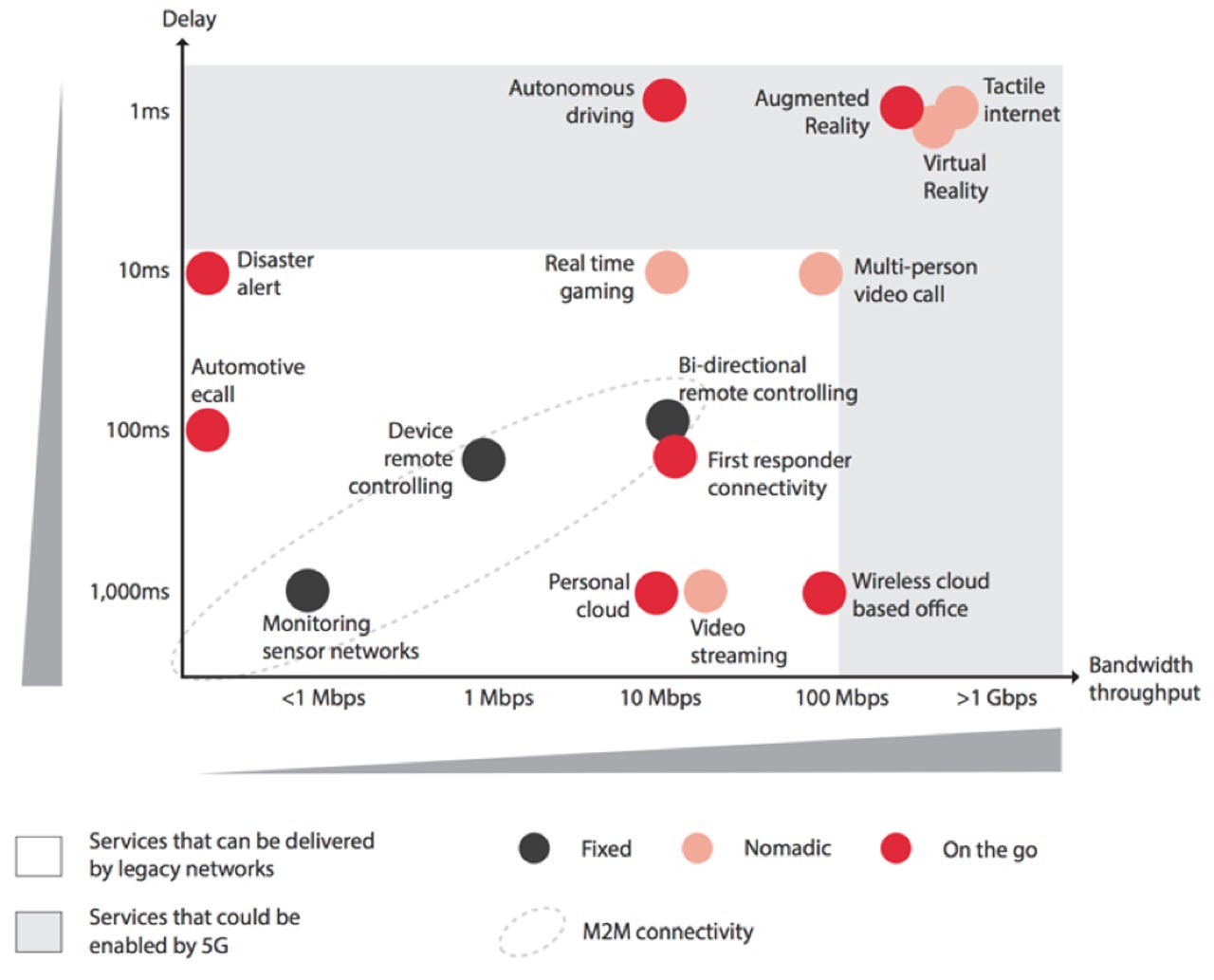5G, AI, and technology disruption: Why all organisations need to prepare now
5G is a bigger opportunity than anyone is aware of right now. When mobile networks leapt from 3G to 4G, there was a boost in speed and performance of around 5-10x. 5G will enable as much as a 100x leap in performance. It's more than raw numbers too; it's what the technology enables and how it will be used that matters.
"We think of 5G as especially enabling really big, really fast connections," CNET editorial director Jason Hiner said at a panel hosted by ZDNet in conjunction with Samsung as part of Vivid Ideas. The Vivid Australia collaboration was hosted by industry expert, Nicole Manktelow earlier this year. Hiner went on in detail, "It's what will enable self-driving cars because of the improvements in performance and reductions in latency, but it's also going to enable a lot more things to connect to the network. There will be more sensors in roads, buildings, and in all kinds of things that we haven't really imagined yet."
To give you an idea of what will be possible through 5G in comparison to current 4G networks, GSMA Intelligent produced a graphic that plots technology solutions across both latency and bandwidth -- both vectors on which 5G technology are a significant improvement upon 4G ones.

Disaster alerts, multi-person video call, and wireless cloud-based office solutions -- previously hard against the edge of network's capabilities -- become effortless with 5G. Autonomous driving, augmented reality, virtual reality, and tactile internet all become possible. Underpinning all of these new 5G-driven solutions will be artificial intelligence (AI), bringing the smarts required for the technology to perform to expectations. AI programs are data-intensive and need to operate in real-time. 5G enables that too.
On the graph, if it seems like AI only provides a relatively sparse number of new technology "features" despite the hype behind it as a technology, there's a reason for that: most of what will land within the "services that could be enabled by 5G" band haven't been invented yet.
"The leap from 3G to 4G enabled apps that we hadn't considered yet -- the likes of Uber and Airbnb, for example," Hiner said. "Those hadn't even been contemplated before, because we lacked the capabilities that make them possible. We should expect with 5G that it's going to enable a whole new range in capabilities that we've only just begun to imagine."
This new wave of innovation and creative energy has the potential to be a boon for Australian organisations in particular because, according to Tim Dillon, Tech Research Asia founder and director, Australia is right at the forefront of 5G interest and rollout.
"If you look at the data at the moment there are three counties in the world that are at the forefront of 5G networks and deployments: the US, China, and Australia. In fact, The GSMA say that by the end of this year, Australia and China will be at the very forefront of the industry," Dillon said.
"But what does it really mean? Because at the moment, 5G applications are like little spot fires and we have yet to process the ubiquitous value of the technology."
What we do know about 5G however, is that it will enable advanced AI applications, sensors, and devices at the edge to all operate together seamlessly and with no latency. Dillon gave a simple example, but one that would have major implications for people using the technology: "a deaf person would be able to sign at you, and by holding your phone up to capture the motions, you could translate what they're saying in real-time, convert it to text, and then re-convert the answers back to sign language.
"At the moment it's little individual applications like that," Dillon added. "Spot fires. We don't know what we don't know yet."
The problem with 'not knowing what you don't know' is that it can become difficult for organisations to move to take advantage of the technology. This means Australian organisations will have access to the benefits of AI but will lack resources, such as overseas case studies, that demonstrate how it can be used. There are risks involved in stepping out into uncharted waters with technology, and just as we saw with the move from 3G to 4G, where startups like Uber were able to disrupt the businesses against slow-to-move incumbents, 5G is likely to herald in a new wave of disruption.
"There's a broad understanding of the value of 5G and AI among executives, but there's also concerns around the risk of failure, trust in the technology, and trust in the outcomes," Microsoft Australia national technology officer Lee Hickin said.
"In order for any kind of technology implementation to be successful, whether it be AI, machine learning, or 5G, you need to have strong leadership at the top. There are lots of pockets of technology doing really interesting things, but without the leadership feeling empowered, it generally falls apart."
The disruption caused by the move from 3G to 4G should serve as a warning for organisations as we move into the AI-enabled, IoT-heavy, edge computing-focused world of 5G. Disruption will come from those organisations that don't drive thought leadership around 5G from the top.
PANELISTS
NICOLE MANKTELOW, Business Technology Journalist
JASON HINER, Editorial Director, ZDNet US
LEE HICKIN, National Technology Officer, Microsoft Australia
FANG CHENG, Executive Director of Data Science, University of Technology Sydney
AMIT BANSALMD, Analytics Delivery Lead APAC & AI Delivery Leader, Accenture
TIM DILLON, Tech Research Asia Founder and Director, Australia
Get more on the developments across ZDNet within the 5G topic section. Plus, keep an eye out across the site in the coming months as we look to host our 2020 Vivid Ideas collaboration in Sydney, more details to follow.